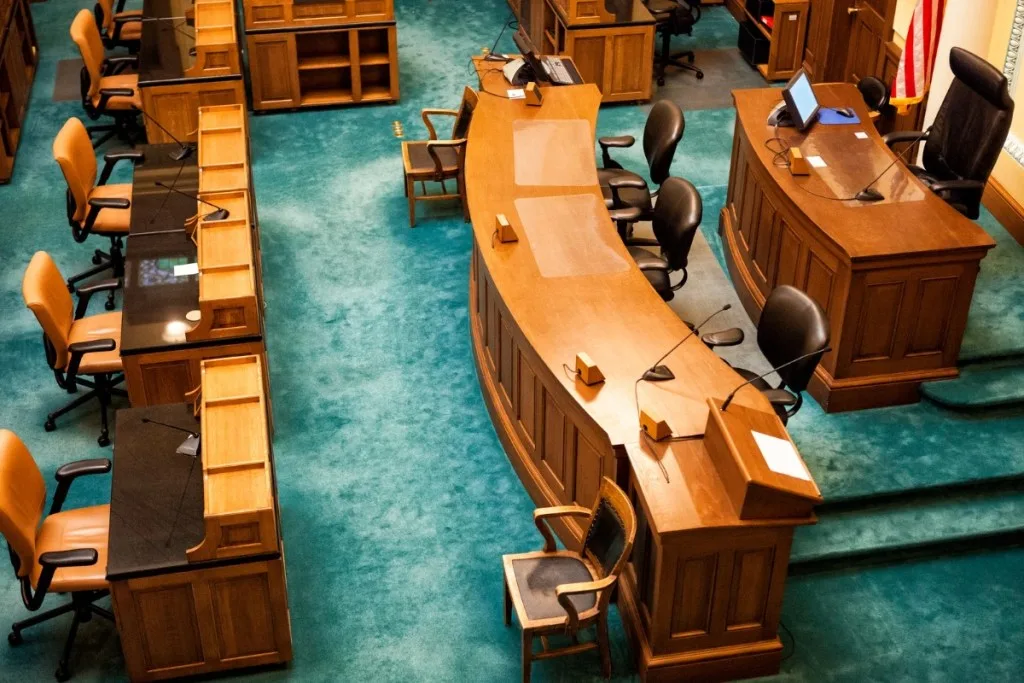On Wednesday, leaders of the House and Senate presented their initial budget plans for nursing shortage and women’s health for the 2024-2025 period. With both suggesting around $289 billion in total funds and $130.1 billion in general revenue.

However, this falls short of the $188.2 billion that the state has available to allocate in this cycle. It also falls short of an excess of $32.7 billion.
The budgets include increased funding for women’s health programs, such as the alternatives to abortion program and maternal assistance.
The legislature will also discuss measures related to maternal, reproductive, and mental health in this session. Other than that, a bill has also been proposed to reestablish the Women’s Health Advisory Committee.

The Nursing Shortage Reduction Program Overview
The Nursing Shortage Reduction Program (NSRP) is a federally-funded initiative. It aims to address the ongoing shortage of nurses in the United States.
The creation of the program is in response to the growing demand for healthcare services. And also, the need to ensure that all Americans have access to high-quality care.

The Nursing Faculty Loan Repayment Program Overview
On the other hand, the Nursing Faculty Loan Repayment Program (NFLRP) is a federal program that aims to address the shortage of qualified nursing faculty.
The NFLRP is administered by the Health Resources and Services Administration (HRSA). It is open to both RNs and APRNs who have outstanding student loans from a Title IV program. These include the Federal Direct Stafford Loan program or the Federal Direct Graduate PLUS Loan program.
To be eligible for the NFLRP, individuals must be U.S. citizens or permanent residents. In addition, an individual must also have a master’s or doctorate in nursing.

Why Avail Of Any Of The Two Programs?
There are several reasons why individuals and organizations may choose to avail of these programs:
Financial Assistance
The Nursing Shortage Reduction Program provides funding to nursing education programs and healthcare organizations to increase the number of registered nurses (RNs) and advanced practice registered nurses (APRNs) in the workforce.
This funding can be used to support scholarships, and loan forgiveness programs. It can also help other initiatives that make it easier for people to enter the nursing profession.

The Nursing Faculty Loan Repayment Program provides loan repayment assistance to individuals who agree to serve as full-time faculty members at accredited nursing schools. This assistance can help individuals with the financial burden of paying off their nursing education loans.
If selected for the program, individuals can receive up to 60% of their outstanding student loan balance. This is up to a maximum of $40,000, in exchange for a two-year service commitment as a full-time nursing faculty member.
After completing the service commitment, individuals may be eligible to receive an additional 25% of their outstanding loan balance. This is up to a maximum of $30,000, for an additional two years of service.

Career Advancement
Another important aspect of the NSRP is its focus on diversity and inclusion. The program recognizes that a diverse nursing workforce is essential. This is for providing culturally competent care and meeting the needs of an increasingly diverse population.
The NSRP provides funding for initiatives that support the recruitment and retention of nurses from underrepresented groups. These include minorities and individuals from disadvantaged backgrounds.
The Nursing Faculty Loan Repayment Program is a great opportunity for individuals with outstanding student loans to receive financial assistance while also making a positive impact on the nursing profession by serving as a faculty member at a school of nursing.

It is important to note that the availability of funds for the NFLRP is limited. Moreover, not everyone who applies will be selected for the program. However, the application process can be a valuable experience even if you are not chosen. It may open up other opportunities for you in the nursing education field.
Addressing The Nursing Shortage
The nursing shortage is a critical issue that affects healthcare organizations and the communities they serve. By participating in these programs, individuals and organizations can play a role in addressing this shortage. They can ensure that patients have access to the care they need.
One of the key goals of the NSRP is to increase the number of nurses trained and prepared to work in underserved and rural communities.
These areas often struggle to attract and retain nurses. As a result, can lead to a lack of access to healthcare for residents.

Fulfillment Of Service Obligation
The Nursing Faculty Loan Repayment Program provides an opportunity for individuals to fulfill their service obligation and also get loan repayment assistance, which can be a win-win situation for them.
With the loan repayment assistance provided by the program, individuals can focus on their teaching and mentoring responsibilities. While also addressing the shortage of qualified nursing faculty across the country.
Do The Two Programs Require To Get Paid Back?
The NSRP and NFLRP are both federal initiatives that provide financial assistance to individuals and organizations. The funds provided under these programs do not need to be paid back by students in the traditional sense, like a loan.
The NSRP provides funding that recipients do not need to repay. However, the program requires the recipients of these grants to use the funds for the purpose for which they were awarded. They may also be subject to audits and other oversight to ensure compliance with program requirements.

Again, under the NFLRP, eligible individuals may receive up to 60% of their unpaid nursing education loan balance in exchange for a two-year service obligation as a nursing faculty member.
The loan repayment is not paid directly to the individual. Instead, it is paid directly to the loan holder (i.e, the lender or loan servicer) of the outstanding nursing education loans of the individual. The individual may have to provide documentation to prove that the loan is outstanding and the amount of the loan.

Final Thoughts
Both programs are competitive and require applicants to meet certain eligibility criteria. It’s important to note that the nursing shortage is a complex issue. Besides, the NSRP and NLFRP are just one of the ways that are being addressed.
The healthcare system is evolving and changing. The nursing shortage is a symptom of the broader changes in the healthcare industry. However, the two programs are steps in the right direction. They are helping to ensure that there are enough nurses to meet the growing demand for healthcare services.
Read our story on: nursing shortage